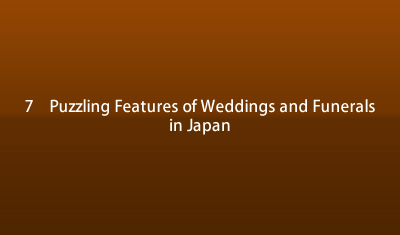 |
Q Why aren't funerals held at shrines?
A In Shintoism, shrines are where the myriads of gods and goddesses are enshrined and death was despised because death was thought to defile the sacred precincts of the shrine. This is in sharp contrast to Buddhism.
According to the mythologies recorded in the Kojiki (712 Records of Ancient Matters) and the Nihonshoki (720 Chronicles of Japan), Izanagi no Mikoto, a deity, pursues his wife to the nether world (Yomi no Kuni) after her death in an attempt to bring her back,but she finds her horribly transformed and infested with maggots. Izanagi flees and barely escapes with his life. After his return, he purifies himself at once by bathing. He then says with relief, ''I'm safe!"
In other words, even the deities did not want anything to do with death; hence, a deceased person was denied entry to shrines that enshrined these deities. Before a funeral could be conducted at a shrine, the doors of the altar and sanctuary had to be first closed and covered with white paper. It was not conducted where it could be seen by the deities.
Presently, the Imperial family conducts funerals based on Shintoism as a vestige of the custom that was practiced when Shintoism was declared the state religion in the Meiji period (1868-1912). However, until the Edo period (1600-1868), even the Imperial familywas buried in accordance with Buddhist rites.



